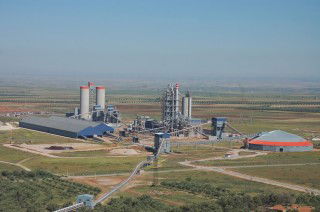With its economy growing at a steady pace, and housing and infrastructure offering plenty of construction potential, Bangladeshi cement producers can look forward to the future despite one or two challenges ahead. ICR takes a look at an industry on the move.
In recent years, Bangladesh has benefited from steady economic growth. GDP expanded by just under six per cent in 2008-09 and accelerated to 6.4 per cent in 2010. Official estimates put real GDP growth at 6.7 per cent in FY11 (July 2010-June 2011), an improvement of 6.1 percentage points against the previous year. The main drivers behind this economic growth are construction, services and manufacturing. However, inflation is now running at a three-year high with the IMF expecting an annual average for 2011 of 10.1 per cent, significantly above the 8.1 per cent noted in the previous year.
Nevertheless, to ensure future economic growth, Bangladesh will need to invest considerably in its infrastructure and eliminate the current bottlenecks. In the World Economic Forum’s Global Competitiveness Report 2010-11, the country is ranked as second-worst (after Nepal) in terms of the quality of its infrastructure, particularly of its power supply.
However, the Bangladeshi government recognises this impediment to growth and in its Sixth Five-Year Plan (FY2011-15), has prioritised an increase in its infrastructure investment. Against a background of an eight per cent GDP growth rate, the government intends to raise the current investment rate of just under 25 per cent to 32 per cent as it pursues a strategy of increased public investment acting as a pacemaker to higher levels of private investment. This should enable the country to improve the quality of its infrastructure and put it on a growth trajectory on a par with the region’s giants of China, India and Vietnam. In addition, housebuilding drives a considerable part of cement demand and is forecast to continue in the same vein.
This increased investment in infrastructure and significant levels of housebuilding spell good news for the country’s construction industry. “Our estimate is that individual house owners will remain a key driver of growth until 2015 when we expect Bangladesh to be the largest importer of clinker in the world,” said HeidelbergCement Bangladesh director Ramakanta Bhattacharya.
